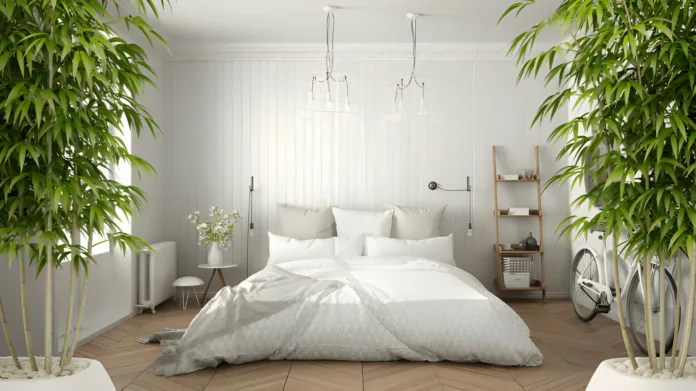While the term “green revolution” often conjures images of agricultural advancements, a quieter revolution is taking place within our homes. This revolution involves the increasing popularity of houseplants, not just for their aesthetic appeal, but for their ability to significantly improve indoor air quality. Among these air-purifying champions, bamboo plants stand out for their unique combination of ease of care, aesthetic versatility, and air-filtering prowess.
Modern living exposes us to a multitude of indoor air pollutants. From common household items like furniture and cleaning products to volatile organic compounds (VOCs) emitted by building materials, these pollutants can irritate our respiratory systems, contribute to headaches, and even exacerbate allergies and asthma. This is where the green revolution comes in. Plants act as natural air filters, absorbing these harmful pollutants through their leaves and converting them into harmless substances.
Bamboo, technically a fast-growing grass, excels in this role. Studies by NASA’s Clean Air Study [source] identified several bamboo species as effective air purifiers, particularly for removing common VOCs like formaldehyde and benzene. These pollutants are often found in building materials, paints, and cleaning products. By absorbing these VOCs, bamboo plants help to create a healthier and more breathable indoor environment.
Beyond VOC removal, bamboo plants also contribute to improved air quality by:
Increasing humidity: Dry indoor air, common during winter months or in homes with air conditioning, can irritate sinuses and exacerbate respiratory issues. Bamboo plants, through transpiration (the process of releasing water vapor through their leaves), naturally increase indoor humidity, creating a more comfortable and healthier environment.

Reducing airborne dust and allergens: Bamboo’s leaves act as passive air filters, trapping dust particles and other allergens that can trigger allergies and asthma. This can be particularly beneficial for individuals suffering from these respiratory conditions.
While all bamboo varieties offer air-purifying benefits, some species are particularly well-suited for indoor environments. The popular Chinese Evergreen Bamboo (Bambusa Textilis) and Golden Bamboo Palm (Chrysolophyllium Casey) are known for their effectiveness in removing pollutants and their ease of care.
Caring for your bamboo plant is relatively simple. Most varieties thrive in indirect sunlight and require watering only every 1-2 weeks, making them ideal for busy individuals or those new to the world of houseplants. Additionally, bamboo plants are known for their resilience and adaptability, tolerating a wider range of light and humidity conditions compared to other air-purifying plants.
Bringing the green revolution into your home through bamboo plants offers a multitude of benefits. Not only do they add a touch of natural beauty and serenity to your space, but they also play a vital role in improving your indoor air quality. As the demand for healthier homes continues to grow, bamboo plants are poised to be a key player in this ongoing revolution.




